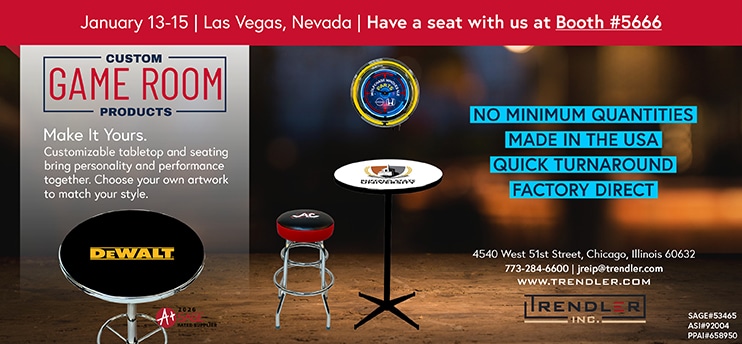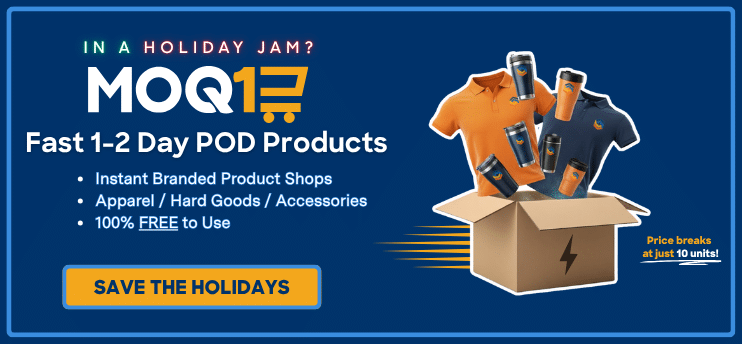Our industry has always been good at turning pens, totes, drinkware and apparel into tangible and exciting brand stories. But lately, the story hasn’t been as fun to tell.
Tariffs are driving up costs, freight prices swing more than a bad DJ set, and clients – spooked by the economy – are trimming budgets. And if you’ve got a warehouse full of slow-moving stock, well, congratulations: You’re now the proud curator of a very niche, very expensive museum.
The instinct in times like these is often to hunker down, cut costs, clear space and wait it out. But there’s another path that not only helps navigate these pressures but can actually turn them into opportunities: circularity.
Circularity isn’t just a sustainability talking point; it’s a business strategy. It’s about keeping products, materials and resources in play for as long as possible, creating loops that capture more value from what you already have instead of constantly buying new. For promo companies, it can mean reducing tariff exposure, unlocking new revenue streams and building resilience in a turbulent market.
Good As New
In the traditional linear model, leftover products from an order, outdated designs and returned products often end up written off or discarded. Circular thinking flips that script.
Every box of product in your warehouse is potential raw material. Overrun drinkware from a canceled order could be reprinted with a fresh design and sold at a discount. Outdated apparel could be overprinted, embroidered or patched with new branding. There are whole merch lines for popular music artists using this strategy and proving to be very popular with concertgoers. Even products with minor defects can be refurbished, packaged creatively and moved into a clearance or “circular special” line.
The key is recognizing that this inventory is already paid for. You’re simply finding a second life for it instead of paying tariffs and freight on brand-new goods. In other words: Stop letting your money collect dust in the warehouse when it could be out there collecting actual money.
Refurbishment As Revenue
Other industries have proved the potential for payoff. In the medical device sector, one company invested $500,000 in a refurbishment program and pulled in $3.5 million a year in returns. That’s a 600% ROI – not bad for what’s essentially giving old products a spa day.
In promo, apparel, bags and tech accessories are all prime candidates for refresh programs. Imagine offering a corporate client the option to “rebrand” their existing promo gear and swapping out old logos for a new campaign at a fraction of the cost of a full reorder. You get repeat business without waiting for them to budget for a brand-new purchase, and they get sustainability bragging rights without having to explain to their CFO why they just paid for 500 more jackets when last year’s are still perfectly wearable.

Elizabeth Wimbush, CAS
Director of Sustainability & Responsibility, PPAI
In the fashion world, brands using resale platforms like ThredUp and eBay’s Pre-Loved Partner Program are making millions annually, not just in direct sales, but in customer acquisition and PR buzz. The promo equivalent could be just as effective.
A tote bag supplier could collect gently used branded bags from distributors, reprint them and resell them as limited runs. A drinkware company could give clients a credit for returning old tumblers, then refurbish and resell them in clearance channels. Distributors could host “swag swap” events for local businesses, trading in old branded goods for discounts on new orders while diverting products from the landfill.
These aren’t just waste reduction strategies, they’re ways to keep your brand in front of customers between orders. And frankly, they’re a heck of a lot more creative than sending yet another email blast with the subject line “Need Merch?”
Localized Loops To Beat Tariffs
Circularity also builds tariff resistance by reducing dependence on imported virgin materials. When you reuse or refurbish products already in your domestic supply chain, you’re no longer as exposed to geopolitical price swings or trade restrictions.
A tote manufacturer could source reclaimed fabric from a local textile recycler instead of ordering new rolls from overseas. A decorator could focus on refurbishing blank products already in their warehouse or bought secondhand from clients. Shorter, localized loops mean fewer shipping delays, lower freight costs and far less stress when a surprise tariff announcement drops right before a big client order.
Technology Makes It Easier
What once required costly infrastructure can now be done efficiently with accessible tech. Direct-to-film and UV printing allow for fast, high-quality reprints on existing products. Simple barcode scanning apps help track returns and manage refurbished stock. Even small, AI-powered inventory tools can flag slow-moving SKUs early enough to pivot them into a “second life” program before they become obsolete.
Basically, the technology exists to make circularity possible without needing a warehouse full of robots – although if you want a warehouse full of robots, that’s between you, your Jetsons-themed dreams and your budget.
Telling The Story
The real leap for promo companies is seeing circularity not as a side project but as core strategy. The benefits aren’t just environmental, they’re financial.
You reduce the need for costly new imports, generate revenue from assets you already own and keep your brand relevant with clients who increasingly value sustainability in their marketing spend.
And just as important, it’s a story worth telling. Clients are looking for partners who can help them stretch budgets, reduce waste and still deliver impact. Sharing measurable results – like units saved from the landfill, dollars saved on materials or emissions avoided – positions you as more than just a supplier or distributor. You become the marketing equivalent of a Swiss Army knife: practical, versatile and always there when needed.
***
Circularity offers the promo industry a way to stay nimble when the market isn’t playing nice. It transforms slow-moving stock into revenue, turns tariff pressure into motivation for local sourcing and makes sustainability a sales tool.
In a market where margins are thin and competition is fierce, it’s a way to keep more value in your own loop and out of someone else’s landfill.
The companies that start experimenting now – whether with refurbishment pilots, take-back programs or creative inventory refreshes – will be the ones who weather the economic storms and come out stronger. Because in promo, just like in sustainability, the smartest moves are the ones that keep your resources working for you as long as possible.
Why not make a little more money while saving the planet?
Wimbush is the director of sustainability and responsibility at PPAI.


